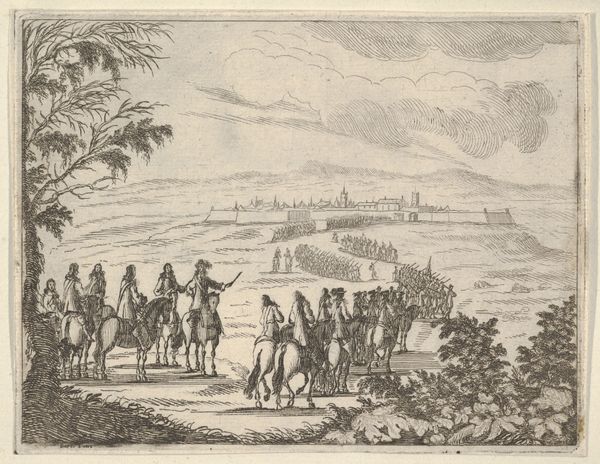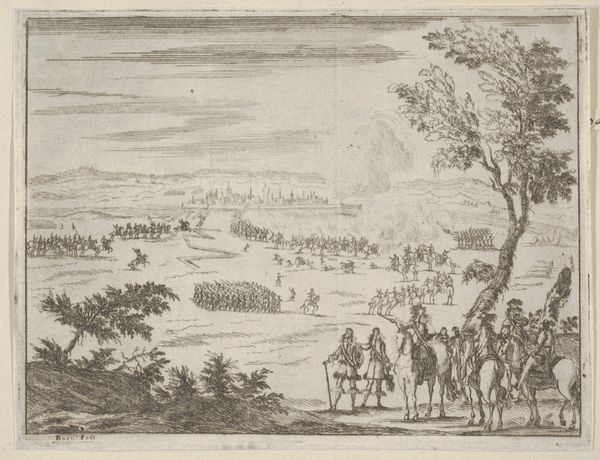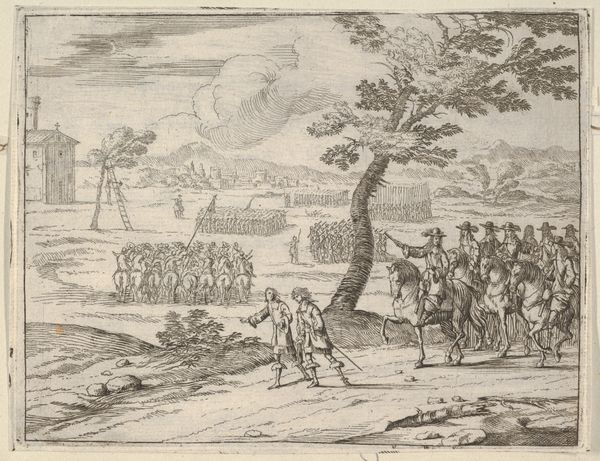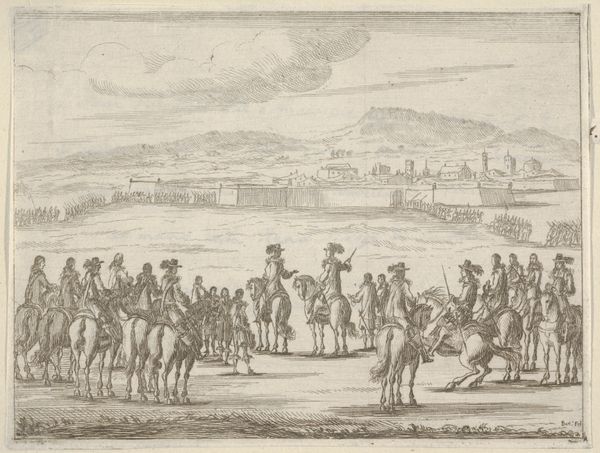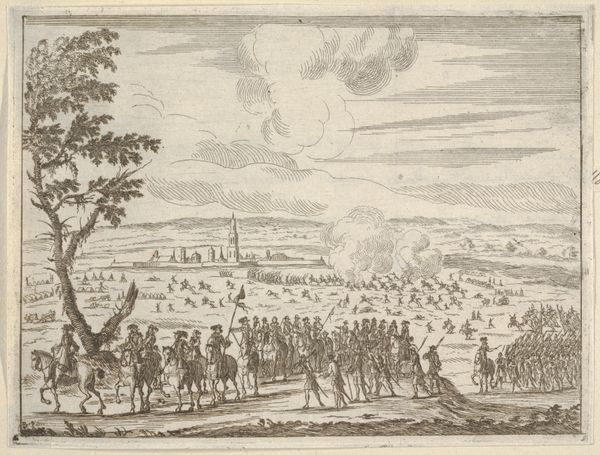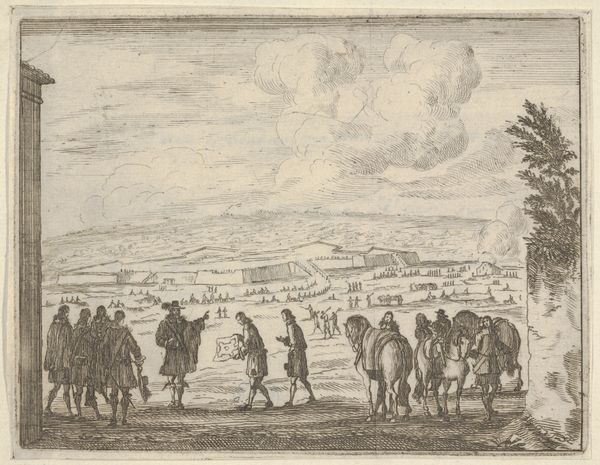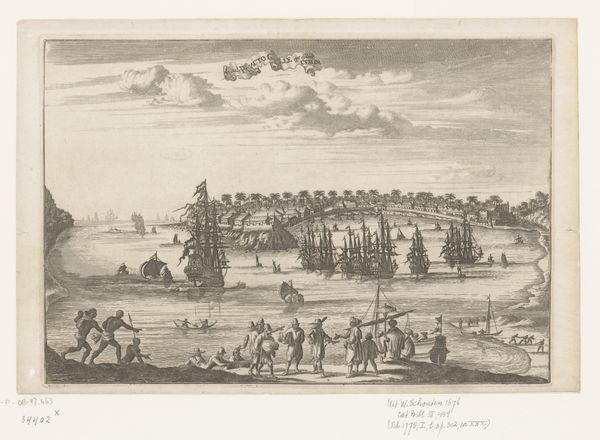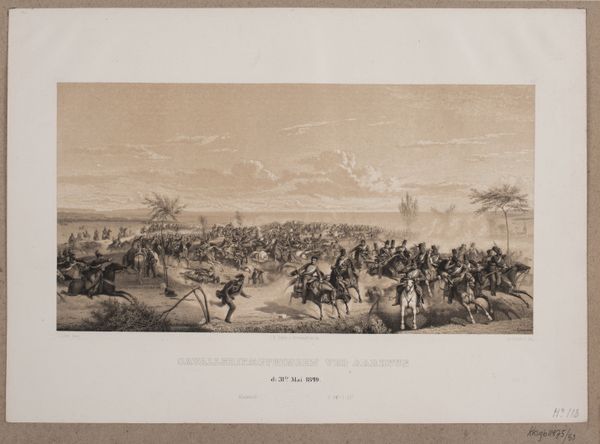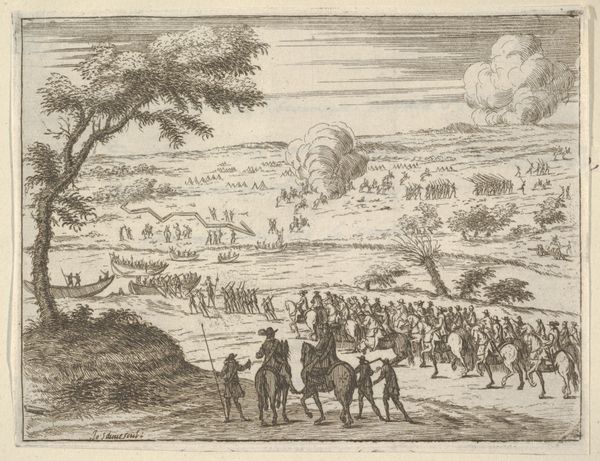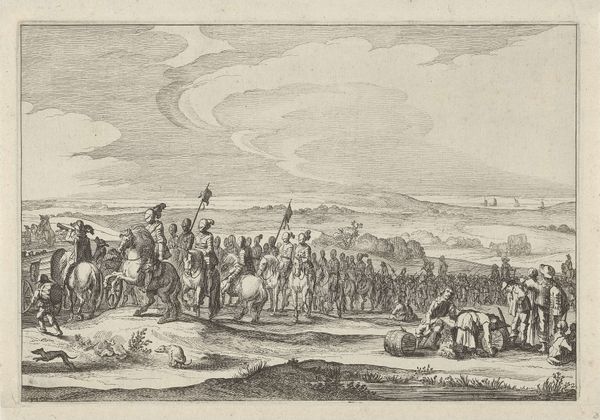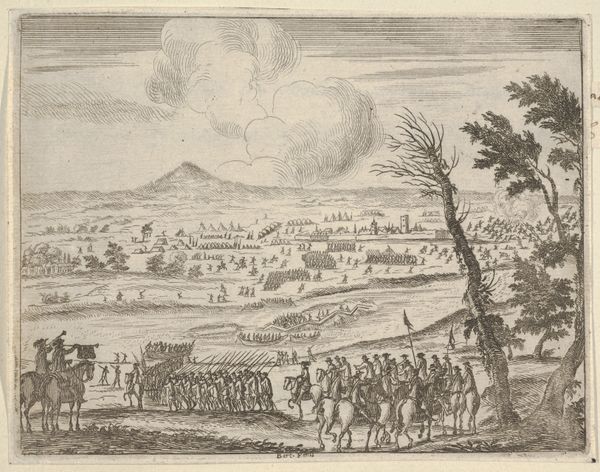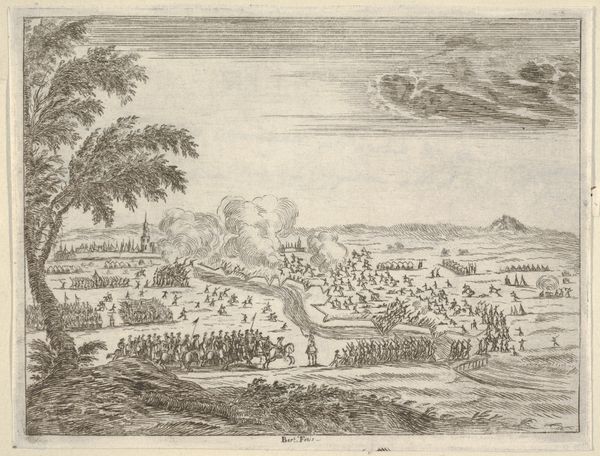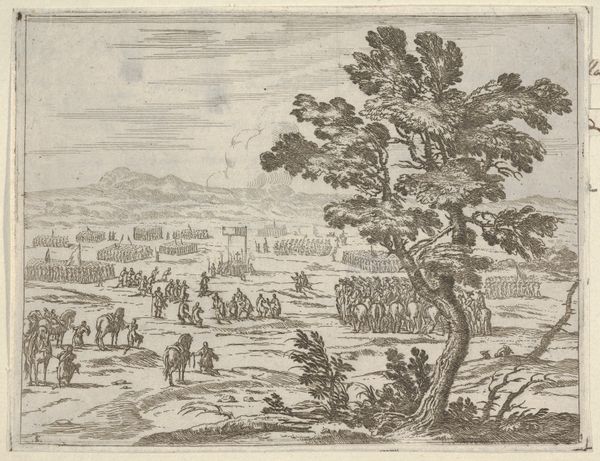![Francesco I d'Este Secures the Fort and the Land to Protect from the German Troops, from L'Idea di un Principe ed Eroe Cristiano in Francesco I d'Este, di Modena e Reggio Duca VIII [...] by Bartolomeo Fenice (Fénis)](/_next/image?url=https%3A%2F%2Fd2w8kbdekdi1gv.cloudfront.net%2FeyJidWNrZXQiOiAiYXJ0ZXJhLWltYWdlcy1idWNrZXQiLCAia2V5IjogImFydHdvcmtzL2FjMjYxZWQyLTUzMTAtNGU2Mi04MDA3LTZhZGM5NWFlNjVjMC9hYzI2MWVkMi01MzEwLTRlNjItODAwNy02YWRjOTVhZTY1YzBfZnVsbC5qcGciLCAiZWRpdHMiOiB7InJlc2l6ZSI6IHsid2lkdGgiOiAxOTIwLCAiaGVpZ2h0IjogMTkyMCwgImZpdCI6ICJpbnNpZGUifX19&w=3840&q=75)
Francesco I d'Este Secures the Fort and the Land to Protect from the German Troops, from L'Idea di un Principe ed Eroe Cristiano in Francesco I d'Este, di Modena e Reggio Duca VIII [...] 1659
0:00
0:00
drawing, print, engraving
#
drawing
#
baroque
# print
#
landscape
#
soldier
#
horse
#
men
#
history-painting
#
italy
#
engraving
Dimensions: Sheet: 4 13/16 × 6 5/16 in. (12.2 × 16 cm)
Copyright: Public Domain
Editor: So, this engraving from 1659 by Bartolomeo Fenice. The full title is a mouthful: "Francesco I d'Este Secures the Fort and the Land to Protect from the German Troops, from L'Idea di un Principe ed Eroe Cristiano in Francesco I d'Este, di Modena e Reggio Duca VIII." It feels… staged. Everyone’s posed, even the horses. What are your initial thoughts about it? Curator: I'm immediately drawn to the engraving technique itself. Consider the labor invested in the precise, repetitive marks required to build this image. How does the process of engraving, with its emphasis on linear detail and reproducibility, shape our understanding of Francesco d'Este’s power? It wasn't just about illustrating a heroic deed; it was about manufacturing an image, circulating a specific narrative. Editor: Manufacturing… you mean like propaganda? Curator: Exactly. Look at the meticulous depiction of the soldiers, the controlled landscape, the orderly procession. The very act of creating and distributing prints like these was a way to solidify Francesco's image and authority. How did the mass production and circulation of images like these impact early modern notions of power and legitimacy? Think of it as image crafting through meticulous, reproducible labor. Editor: I never thought about the "copying" aspect like that before. I was too focused on what it depicted. So it’s less about what we see and more about how it was made, and distributed? Curator: Precisely! What does this print *do*, rather than simply *represent*? What kind of material networks made its creation possible? It tells us just as much about early modern manufacturing and political maneuvering as it does about military exploits. Consider how this "material" perspective helps us redefine value. Editor: That makes so much sense! It gives the image a completely different, almost… modern spin. Thanks! Curator: My pleasure! Looking closely at the materiality of art can provide a fresh lens to analyze historical narratives.
Comments
No comments
Be the first to comment and join the conversation on the ultimate creative platform.
